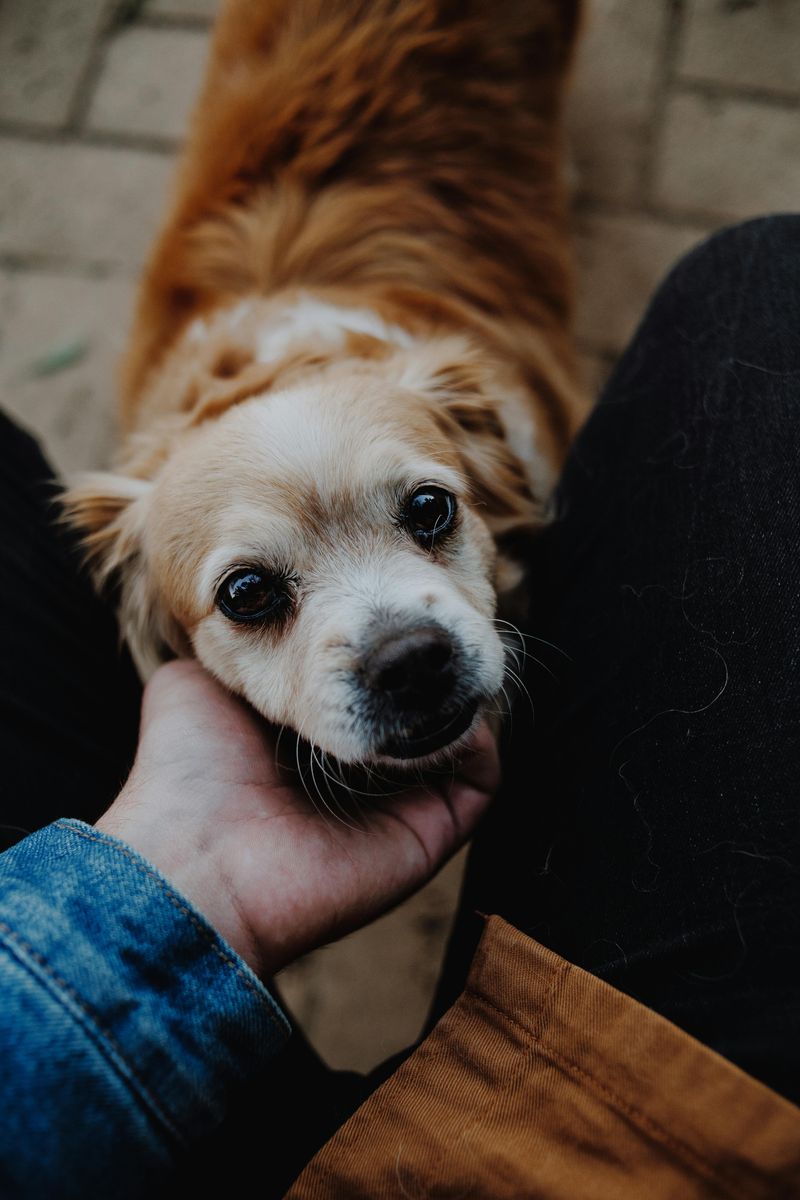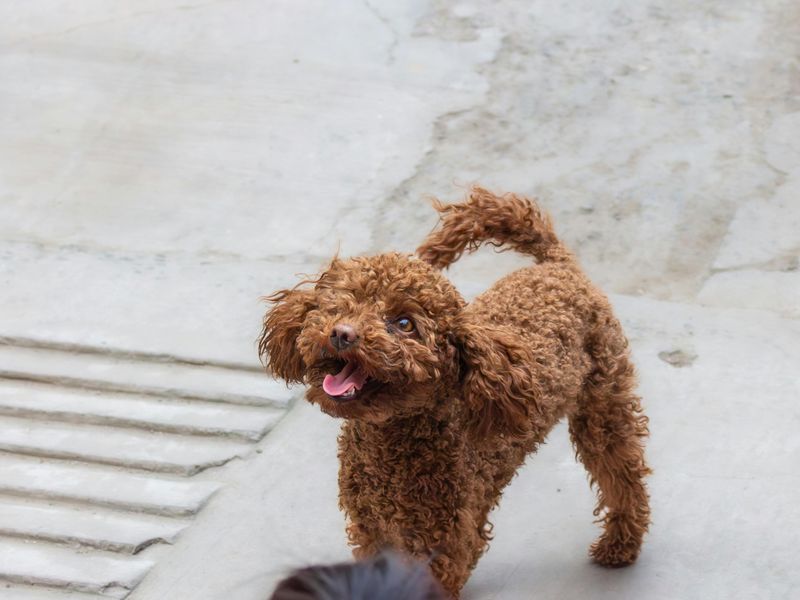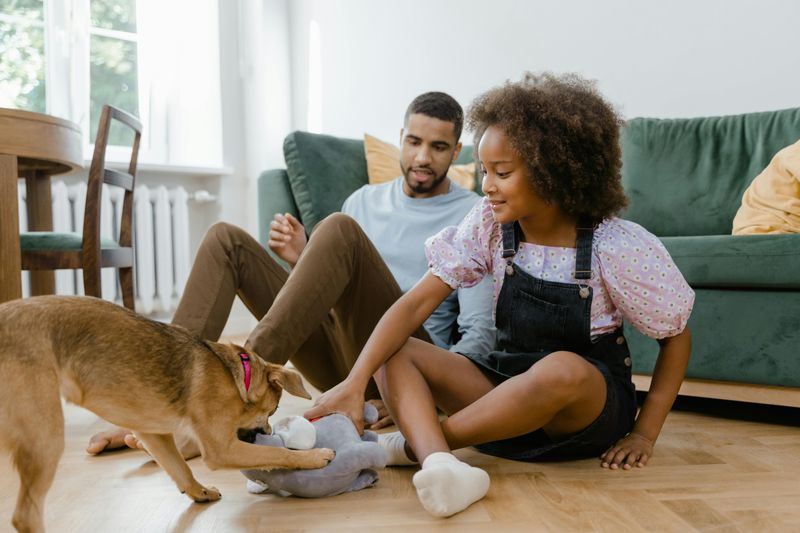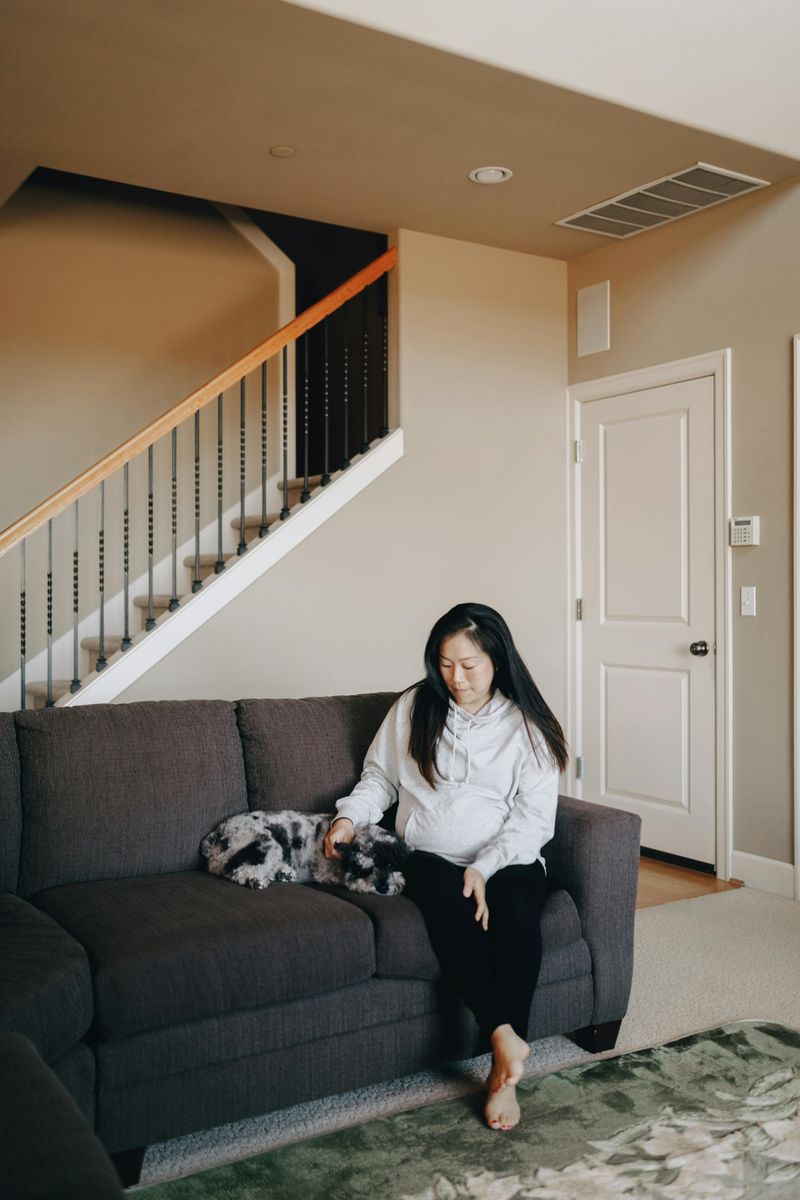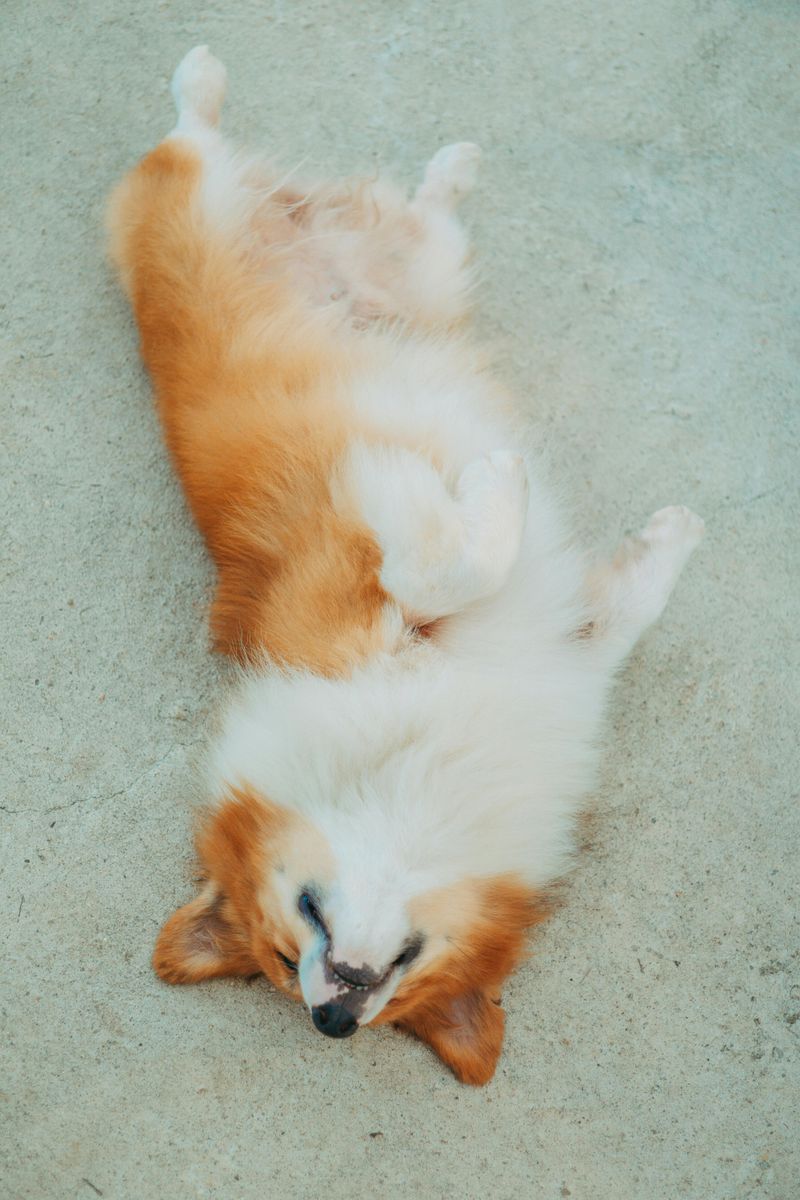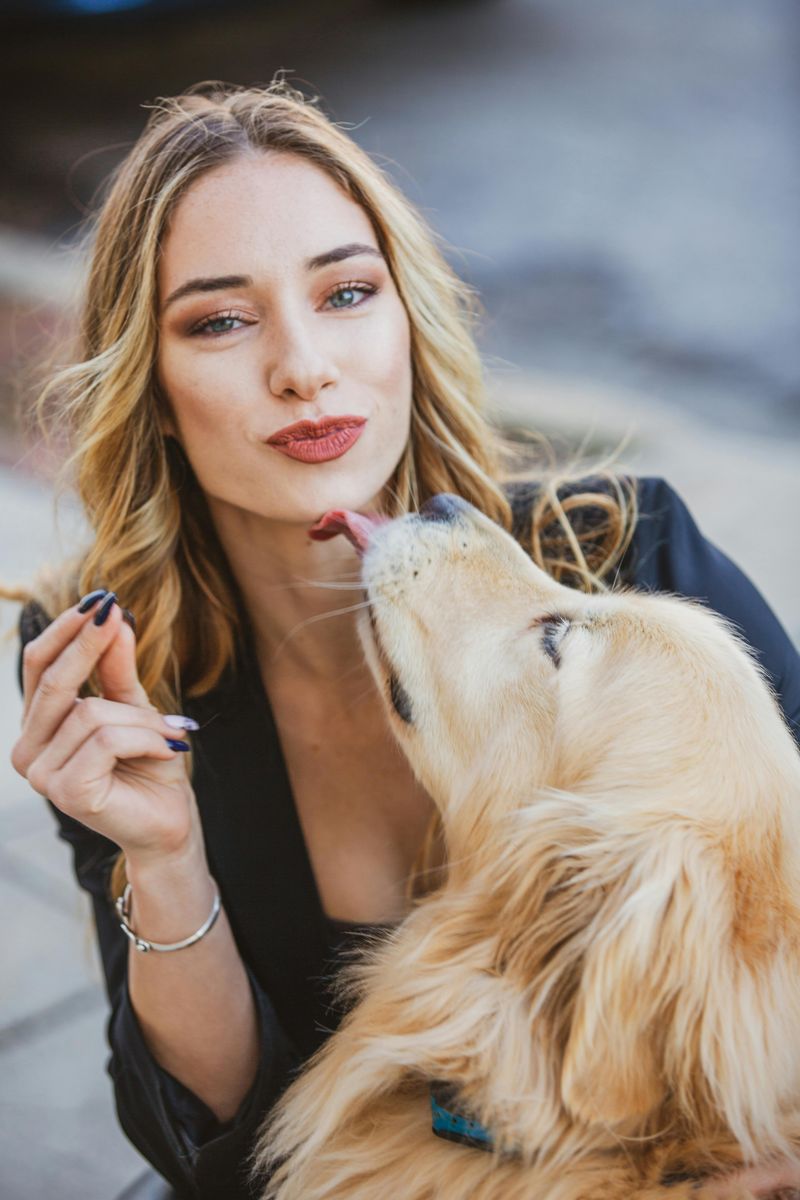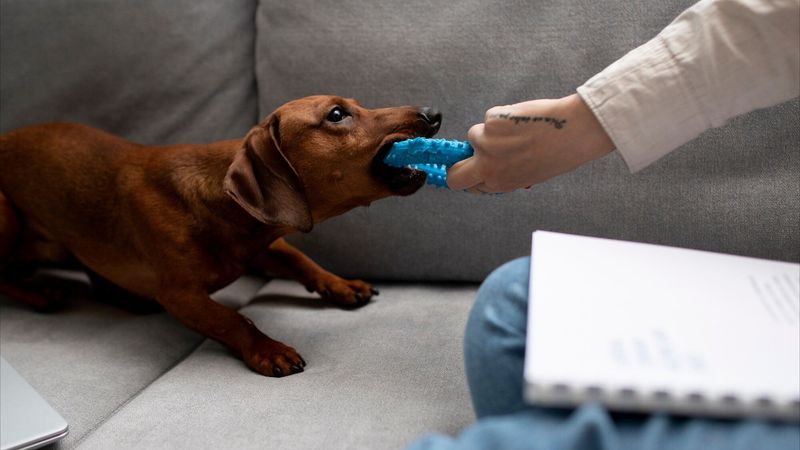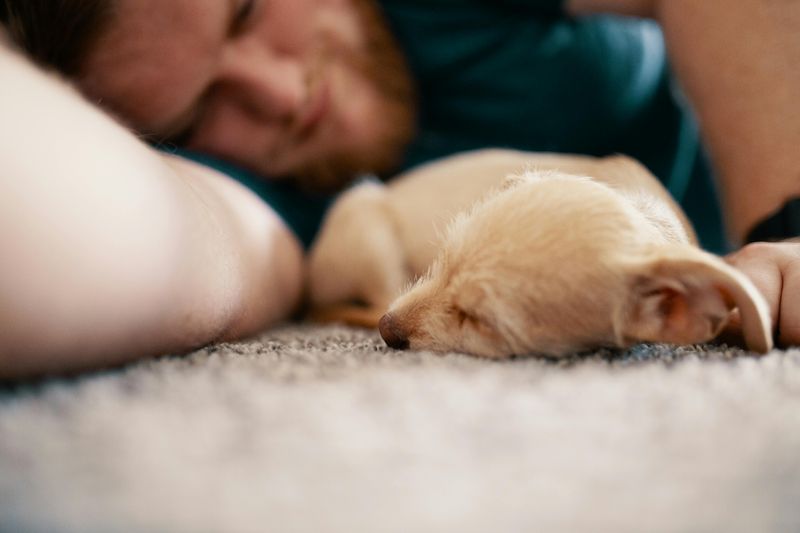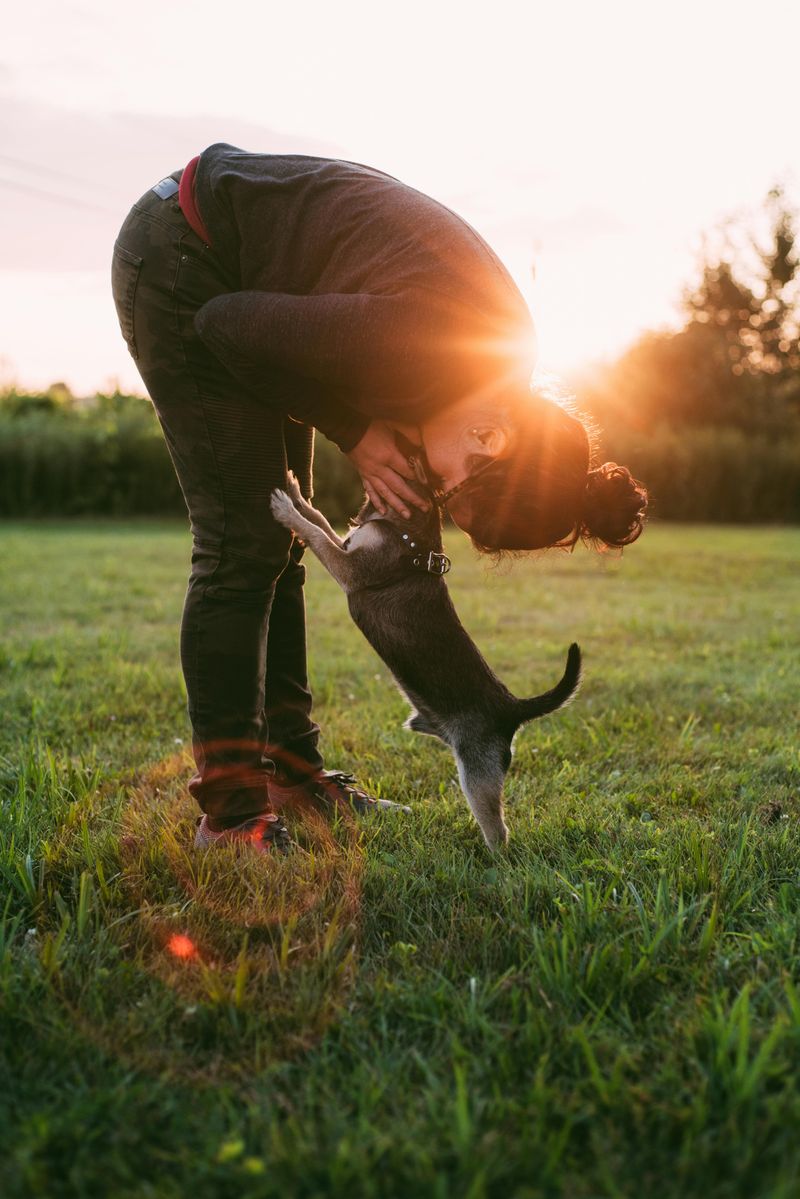Dogs speak a love language that doesn’t need words, yet many of us miss the sweetest messages. From gentle nudges to steadfast shadows, their everyday behaviors are tiny love letters we can learn to read. This guide decodes those signals so you can spot affection the moment it appears. Ready to see just how often your dog says “I adore you” without making a sound?
Soft Eye Contact
When your dog gazes at you with relaxed eyes and slow blinks, it’s a powerful sign of trust and love. This “soft eye” look releases oxytocin in both of you, deepening your bond. Unlike a hard stare, which can be confrontational, soft eye contact features relaxed eyelids and a gentle expression. You’ll often see it during calm moments—on the couch, after play, or while you’re working. Return the gesture with calm presence and a warm smile. Avoid looming over your dog. Instead, sit nearby, blink slowly, and let that shared comfort strengthen your connection.
Leaning Against You
When a dog leans into your leg or side, it’s a clear request for closeness and support. This behavior signals security and affection, especially in unfamiliar environments. Think of it as a dog’s version of a hug—steady, grounding, and intimate. Some dogs lean during greetings; others during thunderstorms or noisy streets. If the lean is gentle and sustained, it’s comfort-seeking rather than pushy. Reward the moment with calm strokes along the shoulder or chest. Avoid patting the top of the head, which some dogs dislike. Allow the lean, breathe slowly, and your dog will feel safe and loved.
Slow Tail Wag to the Right
Not all tail wags are equal. A slow, sweeping wag—often biased slightly to the right—can indicate positive feelings and affectionate engagement. Context matters: pair the wag with relaxed ears, soft eyes, and a loose body. You’ll see it during greetings or when you sit down beside your dog. Avoid confusing it with a high, stiff wag, which may signal arousal or tension. Encourage this gentle wag with quiet praise and a relaxed posture. Over time, your dog will associate calm, loving interactions with your presence, reinforcing a trust-filled connection that feels safe and warmly inviting for both of you.
Bringing You Favorite Toys
When your dog proudly trots over with a favorite toy, it’s more than a play invitation—it’s an affectionate offering. Gift-giving in dogs shows trust and a desire to share valued resources. Some dogs nudge the toy into your lap, others place it gently at your feet. Respond by acknowledging the gift: praise warmly and play a short round of fetch or tug. Even if you’re busy, a brief interaction honors the gesture. Avoid immediately taking the toy away, which can dampen enthusiasm. This exchange builds mutual joy, teaching your dog that generosity is met with connection and shared fun.
Following You From Room to Room
Shadowing behavior—your dog trailing you throughout the house—often reflects attachment and affection. They want proximity because you’re their safe base and source of good things. It’s not necessarily separation anxiety; many confident dogs follow casually without distress. Notice the signs: loose posture, calm tail, and unhurried steps. Encourage healthy independence by occasionally rewarding relaxed stays in comfy spots while you move. But also honor the closeness: offer a smile or a gentle scratch when they settle near you. This balance reassures your dog that love doesn’t disappear when you step away—it simply waits patiently for your return.
Gentle Nudges and Nose Boops
A soft nudge against your hand or a light nose boop is a tender way dogs say, “Notice me.” These touches seek connection rather than demand it. You’ll feel them during quiet moments—reading, working, or watching TV. If the nudge is polite and brief, respond with calm petting or verbal praise. Be mindful of reinforcing pushy behavior; acknowledgment followed by a short pause encourages respectful requests. Over time, these little touches become a reassuring ritual: your dog checks in, you respond, and the bond grows. It’s a simple, sweet dialogue spoken entirely through touch and presence.
Exposing the Belly During Relaxation
Rolling onto the back with a loose body and floppy paws signals deep trust. A relaxed belly display invites affection and shows your dog feels safe in your presence. Distinguish it from submissive appeasement: look for soft eyes, open mouth, and wiggly hips. If welcomed, rub the chest and side ribs rather than vigorously scrubbing the belly, which can overstimulate. Respect when your dog flips back or stiffens—affection must be consensual. Over time, honoring their comfort teaches that vulnerability is met with gentle care, further cementing the bond you share.
Sighing and Settling Near You
That long, contented sigh followed by a cozy flop is canine poetry. Dogs often exhale deeply when they’re relaxed and pleased with their environment—especially when you’re nearby. The soft huff signals, “All is well.” If your dog settles within arm’s reach or at your feet, it’s a comfortable declaration of love. Reinforce with slow strokes or quiet words rather than high-energy play. Create a calming routine—dim lights, soft music, comfy bedding—to invite more of these moments. The result is a shared exhale that turns ordinary evenings into peaceful, affectionate rituals you’ll both crave.
Licking as Social Grooming
While face licking can be excessive for some households, gentle licks on hands or arms often function as social grooming. It’s a behavior rooted in family bonding and puppyhood. If your dog offers a few soft licks and relaxes, it’s affectionate. Guide manners by offering an alternative target—like your hand—if you prefer boundaries. Pair brief licks with calm praise, then shift into a cue or quiet petting. Avoid rewarding frantic licking, which can stem from anxiety. Keep it sweet, short, and mutual, turning a primal bonding ritual into a respectful sign of love and trust.
Bringing You Found Treasures
From sticks to socks, some dogs present “treasures” they’ve discovered, eager to share their excitement with you. This isn’t just scavenging—it’s a social offering that invites joint attention. Celebrate the moment with praise and a trade for a treat or toy, reinforcing cooperative exchange. Avoid scolding for harmless items; you’ll dampen their generous spirit. Instead, teach a cheerful “drop” cue and reward the handover. Over time, your dog learns that sharing with you is rewarding and safe. The result is a charming ritual that blends curiosity, generosity, and affectionate teamwork between you and your eager explorer.
Sleeping Back-to-Back or Touching
Pack animals rest in contact to signal safety and solidarity. When your dog naps with their back against you or drapes a paw across your leg, it’s intimate trust on display. The closeness regulates warmth and heart rate, deepening attachment. If you welcome it, provide a comfy blanket and keep movements gentle. For those who prefer space, offer a nearby bed within reach. Either way, proximity during rest is your dog’s quiet way of saying, “You’re my safe place,” weaving affection into the most peaceful part of the day.
Responding to Your Emotions
Many dogs tune into human moods, approaching with gentle concern during sadness or stress. You might notice nose nudges, leaning, or a quiet presence by your side. This empathy-driven behavior is affectionate and supportive. Reinforce it with calm gratitude: soft praise, slow petting, or a shared pause. Avoid excessive fussing that could create anxiety around your emotions. Instead, normalize gentle comfort and return to routine once you feel better. Your dog learns that being near you during hard moments is meaningful—and safe—deepening your bond through everyday empathy.
Happy Greetings Without Frenzy
A warm, wiggly greeting with soft eyes, loose body, and modest jumps (or four paws on the floor) celebrates your return with love. Teach a sit or stand-stay to channel enthusiasm into polite affection. Reward calm wiggles, gentle tail sweeps, and soft vocalizations. Avoid reinforcing frantic jumping; instead, greet when your dog settles. Short, positive reunions reduce stress and build confident attachment. Over time, your dog learns that loving welcomes don’t need chaos—just joyful presence. The result is a daily reunion ritual that feels affectionate, respectful, and wonderfully predictable for both of you.

